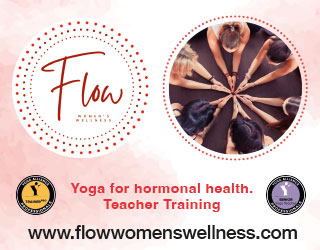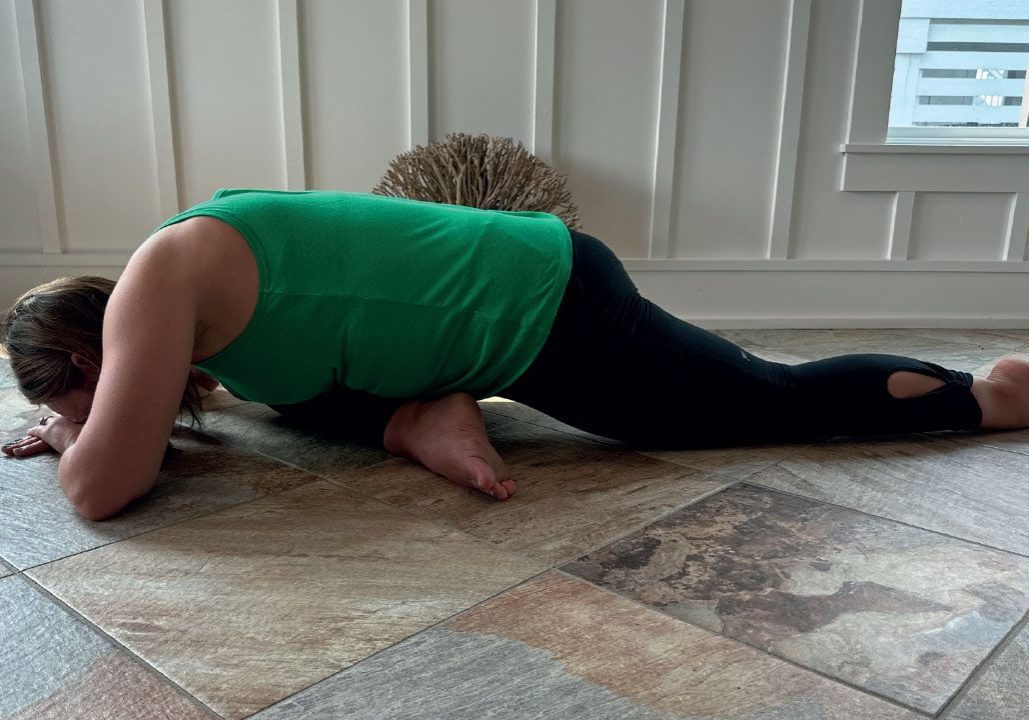There are many symptoms associated with the menopause, but are you aware that anxiety is also on the list? It’s not just the ovaries that produce female sex hormones, the adrenal glands produce some too…but the adrenal glands also produce our ‘stress hormones’ whose role includes protecting us and keeping us alive. Menopause is a time of great change, which may bring uncertainty and fear. As the body reacts to this stress, we may become overwhelmed and anxious. Here is a short floor-based practice that brings gentle awareness and movement to the back of the body where the adrenal glands and the kidneys that they sit upon are located. The energy channels of the kidneys help us to navigate change, so this is a wonderful practice to support anxiety. The postures can be practiced as suggested below or you can make the practice longer by holding each poses for 3-4 minutes in a yin yoga style.
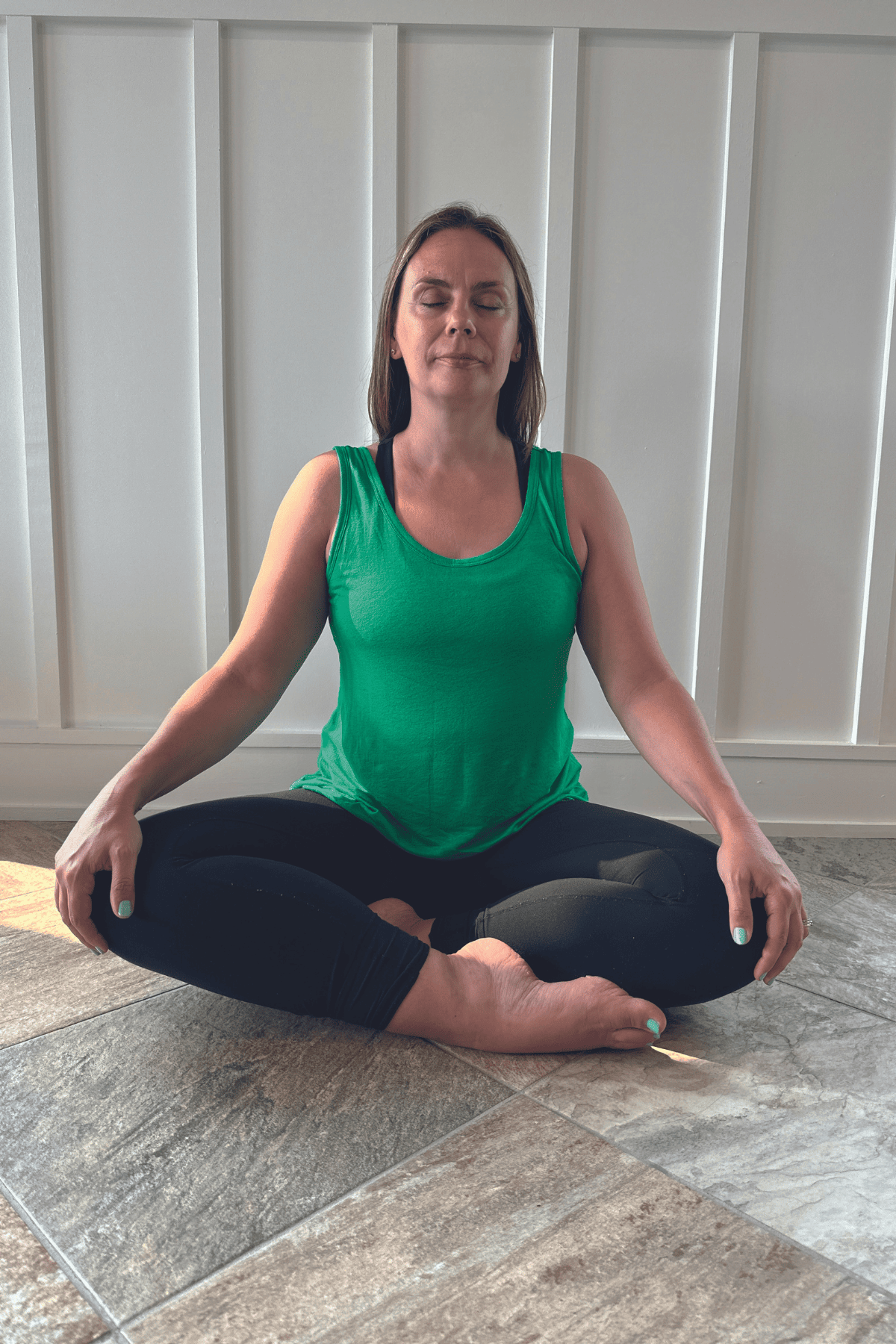
Easy Pose
We start our practice in a comfortable seated position such as Easy Pose. Allow the shoulders to align over the hips so the spine is straight, and energy can move easily. Turn the hands downwards and place them on the knees; this helps us to feel grounded. Allow the arms, shoulders, and jaw to become soft. The eyes can close completely, or allow the gaze to drop down towards the earth… this reduces the stimulation of the outer world and allows us to connect more deeply with ourselves.
Become aware of your breath. Slowly inhale, drawing a deep breath into the body and then slowly exhale, releasing tension, tiredness and stagnant energy. Slow, deep breathing helps to calm the nervous system and therefore the whole body. Sit and breathe deeply for 10-12 rounds of breath.
Humming Bee Breath
Serotonin is a ‘happy hormone’ and we can encourage its production in simple ways. Firstly, bringing a smile to your face as you think about your favourite person or place. After a minute or so, start to practice Humming Bee Breath. This is done by inhaling as normal, but rather than breathing out, you ‘hum’ the breath out and for as long as you can. Feel the vibrations in your chest as the body relaxes. The effects can be intensified by placing the index fingers on the ‘tragus’ part of the ears (this also stimulates the kidney energy channels as they finish at the ears). Repeat 6-8 times.
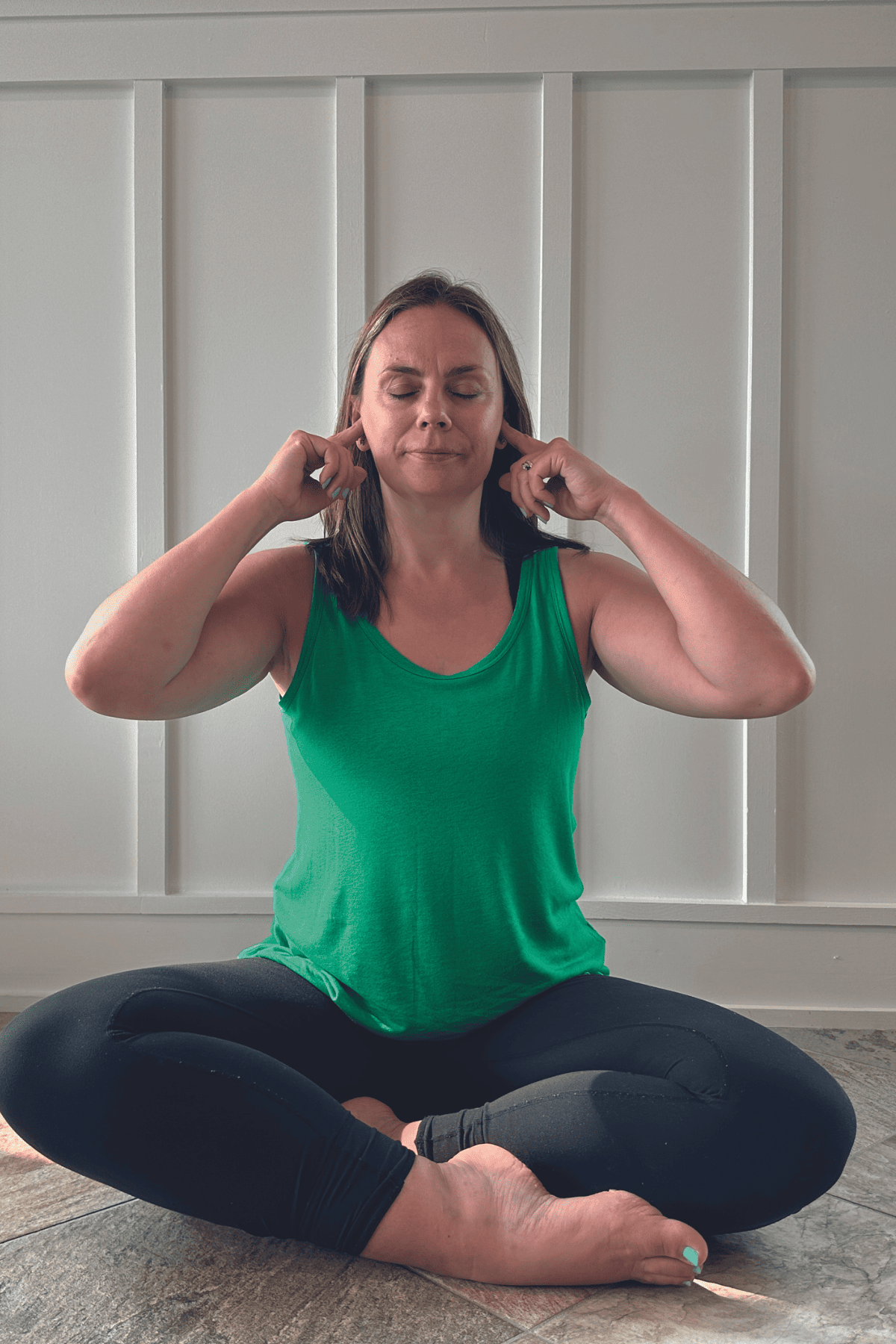
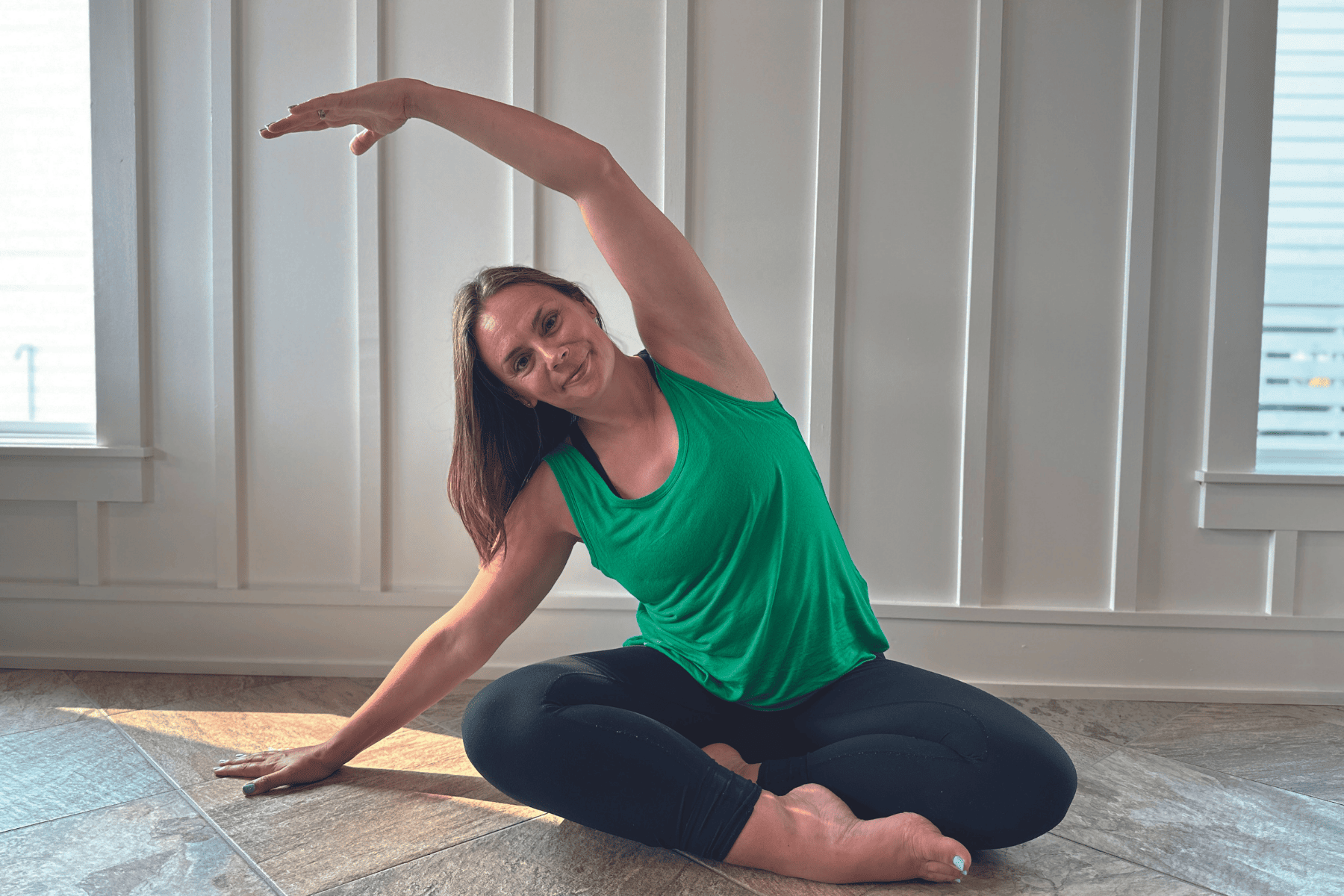
Seated Side Stretch
To stretch into the back body, we remain seated. Next, place the right hand to the earth and as you inhale lift the left arm, as you exhale bring the left arm over the head stretching towards the right side coming into a Seated Side Stretch. Keep the arms and body looking forward. Hold for five rounds of breath, repeat the movement to the left side.
Seated Forward Fold
Next, sit with your legs extended out in front of you, make sure you are sitting comfortably on the front of your sitting bones. Bend you knees slightly if you feel tight at the back of your body. As you inhale, lift your arms above your head, relaxing the shoulders and as you exhale, lower the chest and arms forward moving into a Seated Forward Fold. Let the hands rest on the shins, ankles or feet depending how comfortable this stretch is. Focus on slow, deep breathing, into the back and side of the ribcage. Hold between 5-8 rounds of breath.
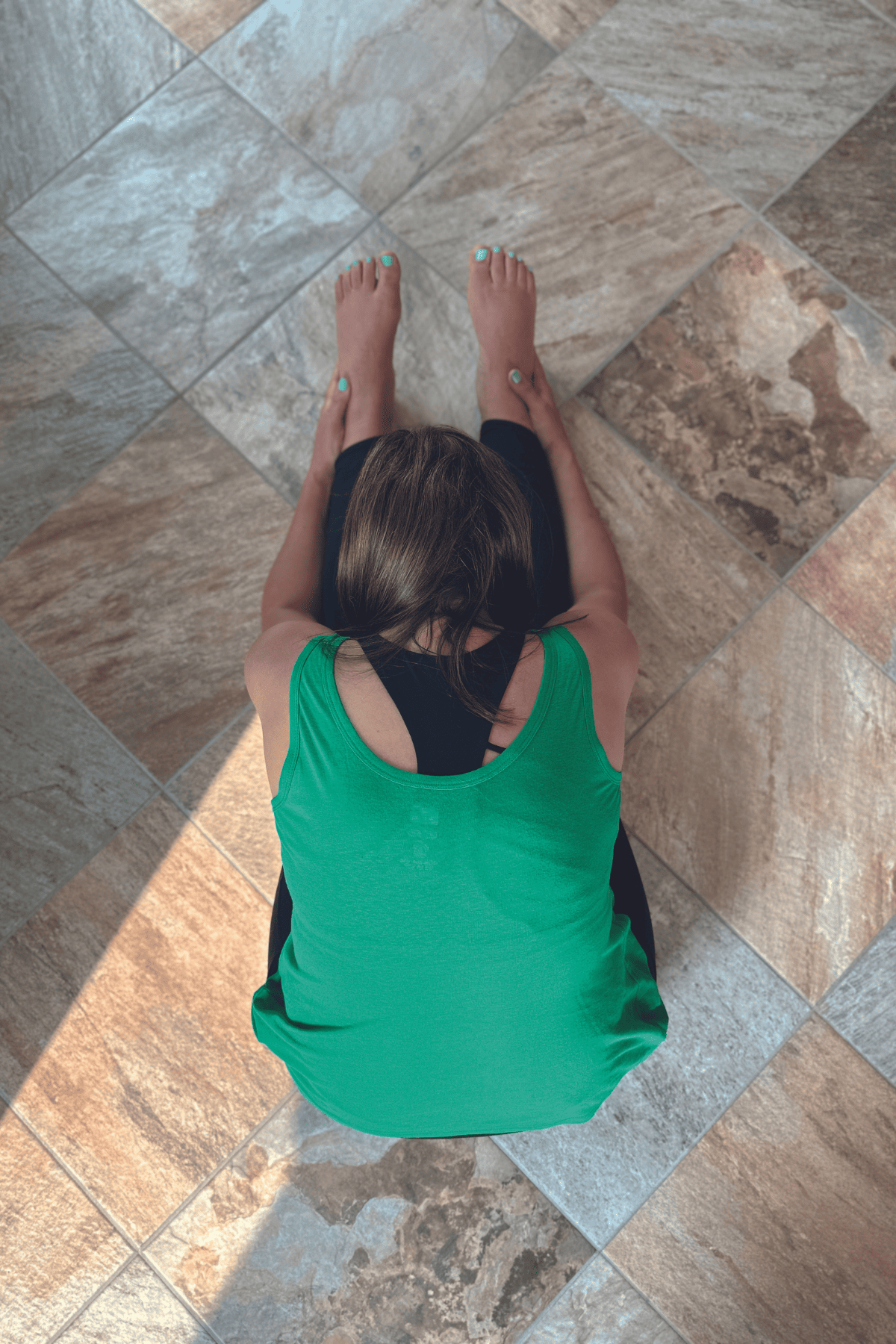
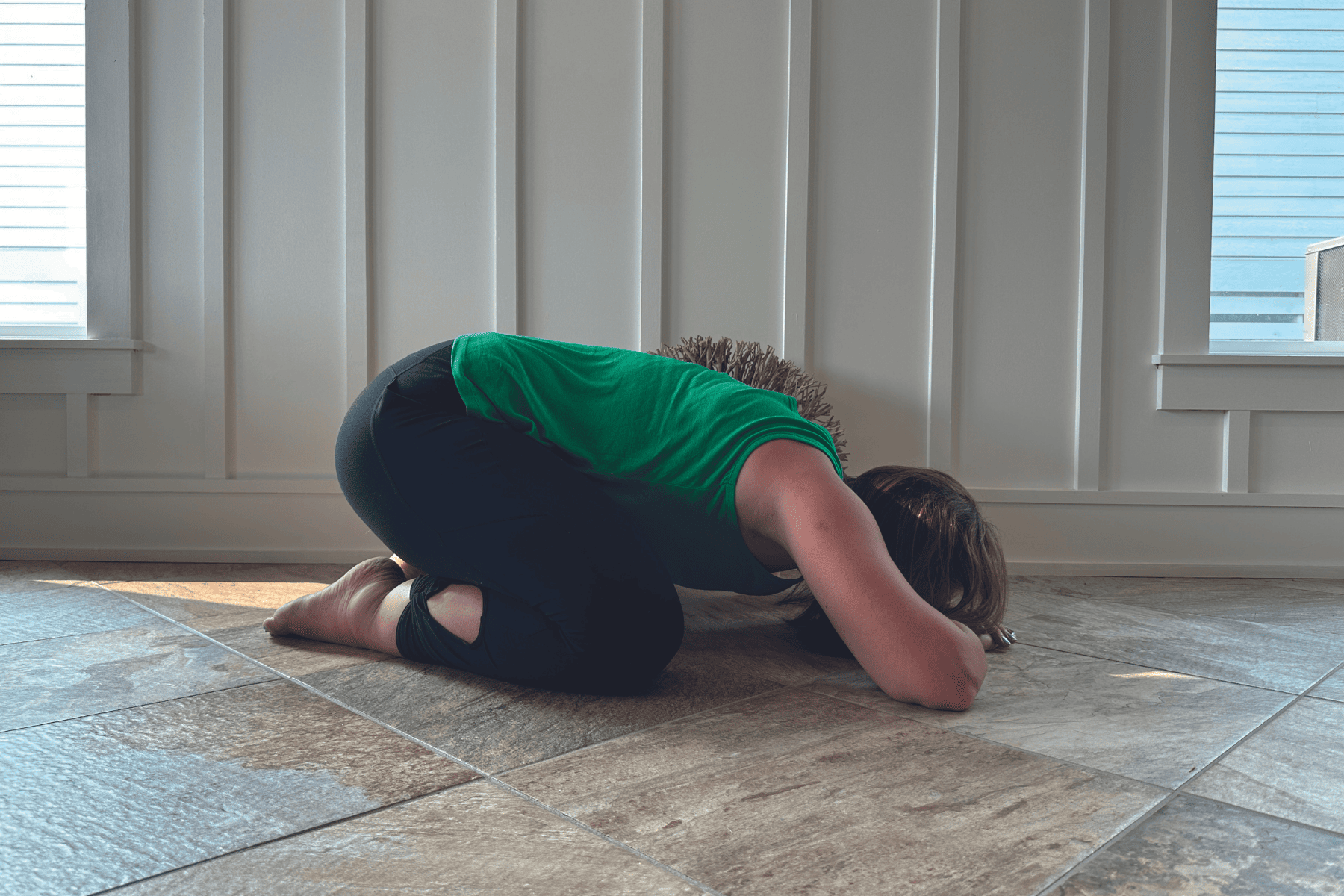
Wild Knee Childs Pose
When you are ready, bring yourself onto the hands and knees. Bring the feet together and allow the knees to move to the edges of the mat. Bring the sitting bones back to the heels and lower the rest of the body to the earth, drawing yourself back into Wide knee Childs’ Pose. Arms may be extended, or you may choose to rest your forehead on them if your head does not touch the floor. Remain here for 6-8 rounds of breath. Child’s Pose is a position of rest helping to calm the body. The extra benefit hormonally is when the forehead rests on the floor there is an extra awareness of the third eye/pituitary gland. This gland sends signals directly to the ovaries and the adrenal glands to help balance the body.
Sphinx
Next, we bring ourselves into a supported backbend as we move into Sphinx. With your body looking down to the earth, lower the front of your body down to the floor, draw the elbows forward under the shoulders allowing the chest to lift and curve the spine. Stay for 6-8 rounds of breath. As you come out of this pose you may wish to practice a few rounds of cat/cow to remove any stiffness.
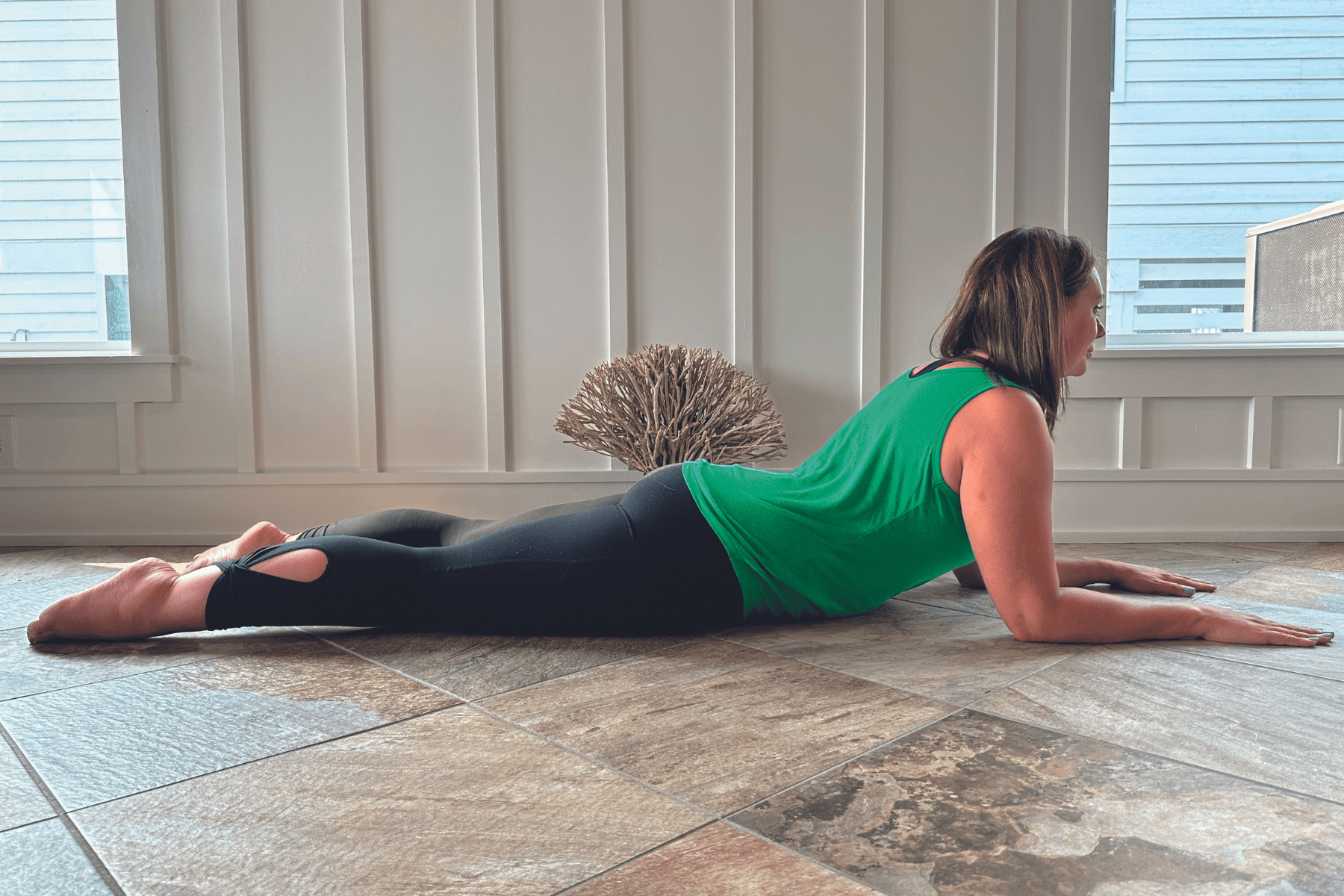
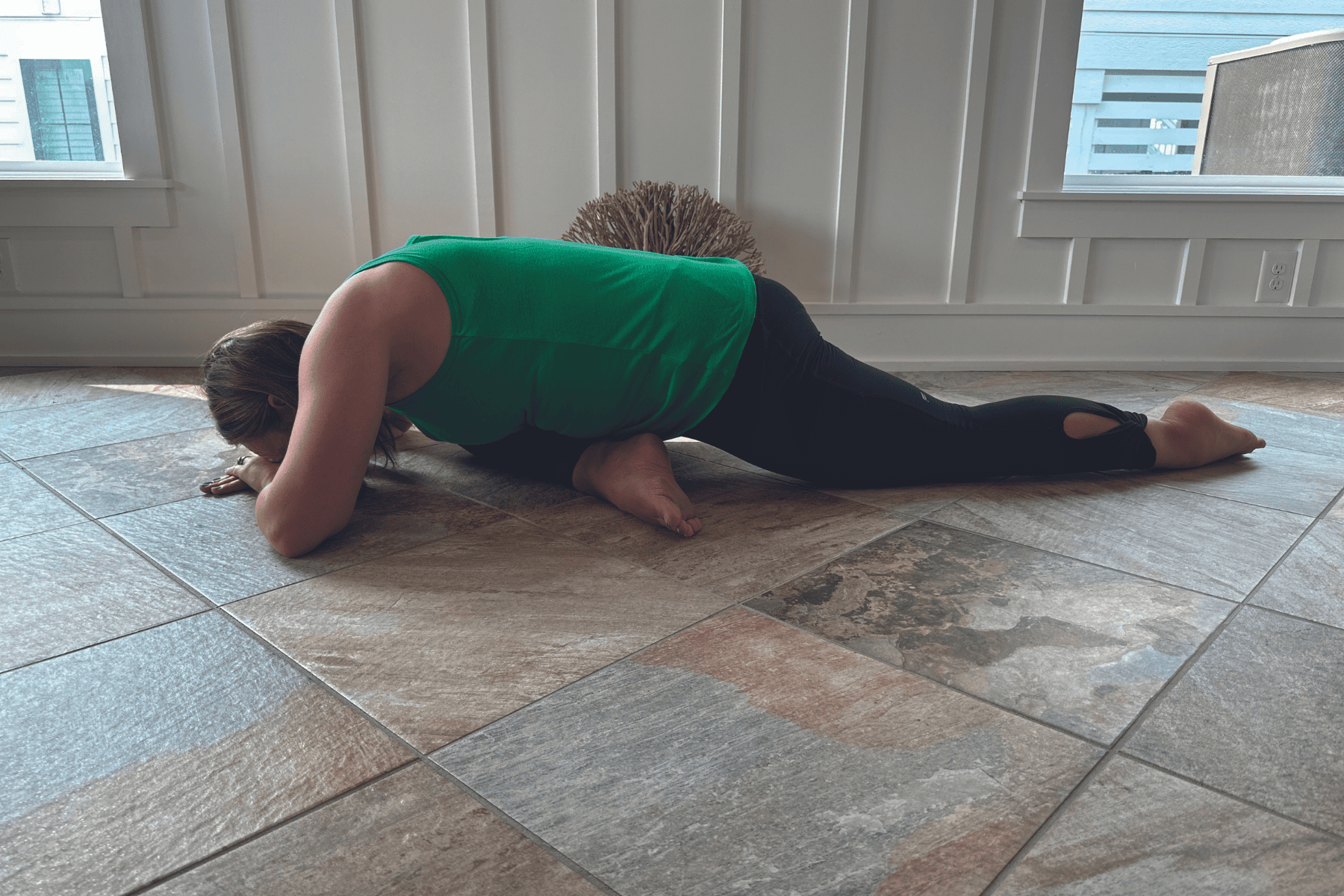
Pidgeon Pose
Starting on all fours, move into Pigeon Pose. Draw the right knee forward to the right wrist, or if there are knee or hip issues, keep the leg as it is. If you have more mobility, draw the right foot across the body towards the left wrist. Extend the left leg out behind you, with the knees and toes facing downwards. You can stay upright or lower the upper body down towards the earth. Stay for 6-8 rounds of breath. Repeat with the left leg. Although there is a stretch into the spine, we also stretch into the energy channels of the liver via the hips. The liver helps to remove excess hormones and toxins from the body, therefore a cheeky hip opener in any menopause sequence is beneficial.
Supine Twist
As we move towards the end of the practice, we lower the back of the body down to the earth. The arms extend outwards in line with your shoulders, the knees bend and the feet are flat against the floor. As you exhale, lower both legs to the right into a Supine Twist trying to keep the left shoulder on the floor (you might want to place a block or blanket under the legs if they don’t touch the earth to make this comfortable to hold), turn your head to the left. Stay for 6-8 rounds of breath, then repeat on the left side.
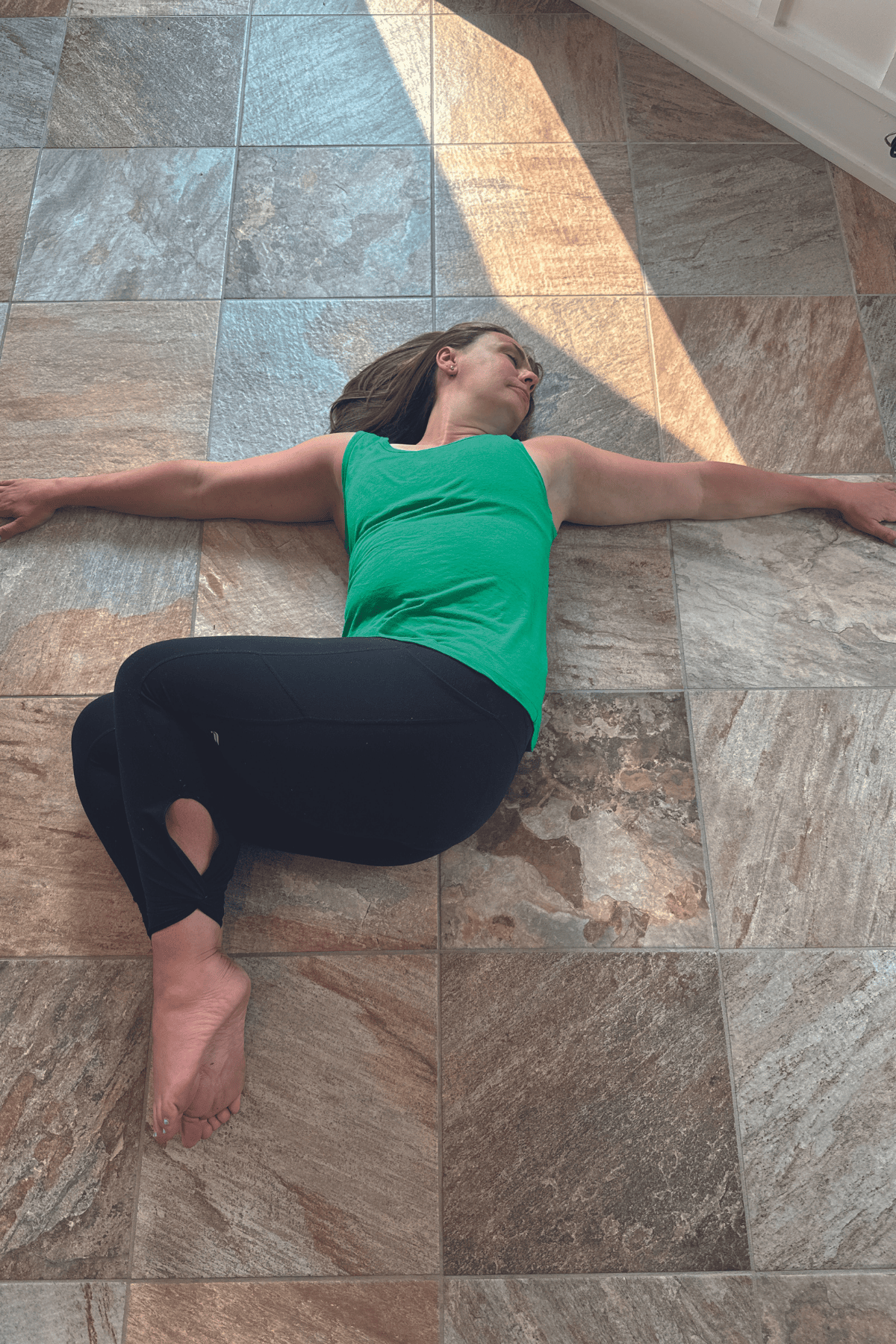
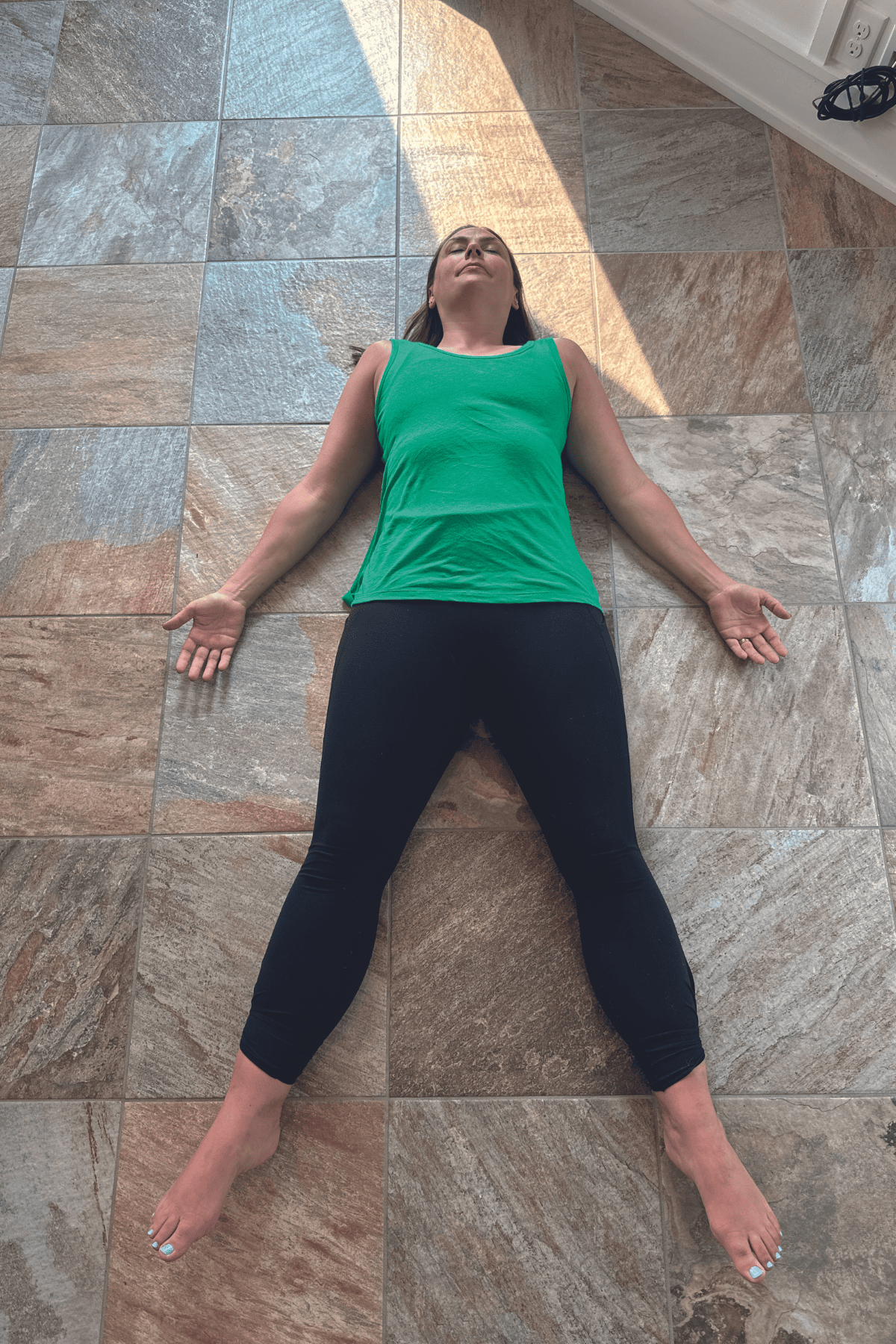
Savasana
As with all practice we finish by resting the body in Savasana. We are focused on the breath and nothing else. The body is open and balance and energy can flow freely around the body. We stay here for 5-8 minutes.
If you do not have time for a full practice each day, just try one or two of these poses. Slowing down and pausing can make a huge difference to the mind and body.
Kelsey Taylor is a Senior Yoga Teacher and Menstruality Mentor who runs teacher training in Staffordshire, UK. She is also nominated for OM’s ‘Favourite Teacher Trainer’ in this year’s OM Yoga Awards. Visit: flowwomenswellness.com

